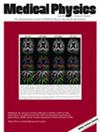Hybrid transformer-based model for mammogram classification by integrating prior and current images
Abstract
Background
Breast cancer screening via mammography plays a crucial role in early detection, significantly impacting women's health outcomes worldwide. However, the manual analysis of mammographic images is time-consuming and requires specialized expertise, presenting substantial challenges in medical practice.
Purpose
To address these challenges, we introduce a CNN-Transformer based model tailored for breast cancer classification through mammographic analysis. This model leverages both prior and current images to monitor temporal changes, aiming to enhance the efficiency and accuracy (ACC) of computer-aided diagnosis systems by mimicking the detailed examination process of radiologists.
Methods
In this study, our proposed model incorporates a novel integration of a position-wise feedforward network and multi-head self-attention, enabling it to detect abnormal or cancerous changes in mammograms over time. Additionally, the model employs positional encoding and channel attention methods to accurately highlight critical spatial features, thus precisely differentiating between normal and cancerous tissues. Our methodology utilizes focal loss (FL) to precisely address challenging instances that are difficult to classify, reducing false negatives and false positives to improve diagnostic ACC.
Results
We compared our model with eight baseline models; specifically, we utilized only current images for the single model ResNet50 while employing both prior and current images for the remaining models in terms of accuracy (ACC), sensitivity (SEN), precision (PRE), specificity (SPE), F1 score, and area under the curve (AUC). The results demonstrate that the proposed model outperforms the baseline models, achieving an ACC of 90.80%, SEN of 90.80%, PRE of 90.80%, SPE of 90.88%, an F1 score of 90.95%, and an AUC of 92.58%. The codes and related information are available at https://github.com/NabaviLab/PCTM.
Conclusions
Our proposed CNN-Transformer model integrates both prior and current images, removes long-range dependencies, and enhances its capability for nuanced classification. The application of FL reduces false positive rate (FPR) and false negative rates (FNR), improving both SEN and SPE. Furthermore, the model achieves the lowest false discovery rate and FNR across various abnormalities, including masses, calcification, and architectural distortions (ADs). These low error rates highlight the model's reliability and underscore its potential to improve early breast cancer detection in clinical practice.

 求助内容:
求助内容: 应助结果提醒方式:
应助结果提醒方式:


